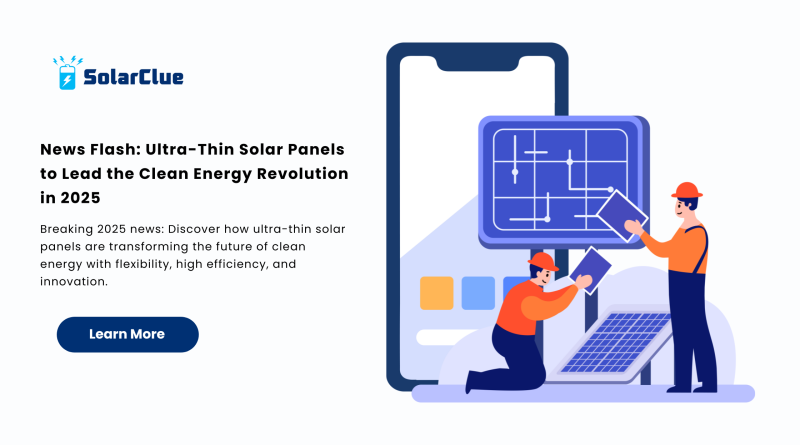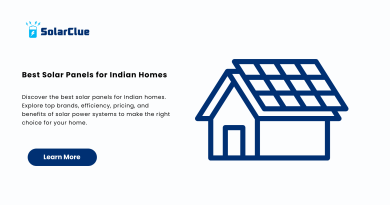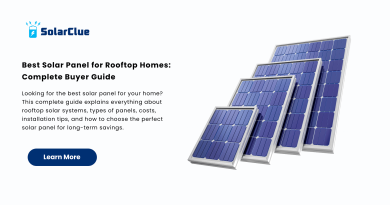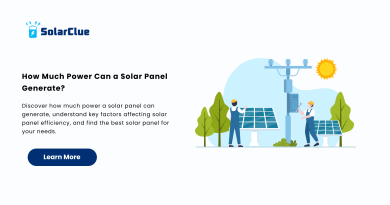News Flash: Ultra-Thin Solar Panels to Lead the Clean Energy Revolution in 2025
The world of solar energy is undergoing a significant transformation, and at the heart of it lies an incredible innovation: ultra-thin solar panels. These panels, much thinner than a human hair, promise to reshape the future of clean energy by offering unmatched flexibility, lightweight structures, and improved performance. As the demand for sustainable living grows, ultra-thin solar panels are emerging as the next big leap for both homes and industries, ready to take the place of traditional solar panels in many applications.
Table of Contents
- 1 How Ultra-Thin Solar Panels Work
- 2 Major Benefits of Ultra-Thin Solar Panels
- 3 Impact on Clean Energy and Renewable Energy Movement
- 4 Applications of Ultra-Thin Solar Panels
- 5 Ultra-Thin vs Traditional Solar Panels
- 6 Efficiency and Performance Metrics
- 7 Challenges Facing Ultra-Thin Solar Technology
- 8 Recent Innovations and Future Outlook
- 9 Choosing the Best Solar Panel for Your Needs
- 10 Why Ultra-Thin Solar Panels Could Dominate the Market
- 11 Government and Corporate Investments
- 12 How to Incorporate Ultra-Thin Solar Panels at Home
- 13 Final Thoughts: The Bright Future of Solar Power Systems
- 14 FAQs About Ultra-Thin Solar Panels
How Ultra-Thin Solar Panels Work
At their core, ultra-thin solar panels operate similarly to conventional panels. They absorb sunlight and convert it into electricity using photovoltaic (PV) technology. However, unlike traditional solar panels made from thick silicon wafers, these ultrathin versions use advanced materials like perovskite, organic photovoltaics, or flexible silicon, making them bendable and super lightweight. The ability to mold them onto various surfaces without compromising solar panel efficiency is what makes them revolutionary.
Major Benefits of Ultra-Thin Solar Panels
One of the most striking benefits of ultra-thin solar panels is their flexibility and portability. This allows them to be used in scenarios where traditional rigid panels would fail. From backpacks that charge your phone to entire building facades wrapped in solar material, the potential applications are endless. Moreover, these panels offer promising improvements in solar panel efficiency, especially when deployed in areas where weight and shape flexibility are critical.
Compared to traditional solar panels, ultra-thin solar panels are less invasive, easier to transport, and can even work better in low-light conditions. This positions them as a strong contender in the ever-growing renewable energy landscape.
Impact on Clean Energy and Renewable Energy Movement
By providing a more accessible, versatile, and scalable solution, ultra-thin panels could significantly accelerate the adoption of clean energy worldwide. As governments and corporations strive toward zero-carbon goals, these innovations are crucial. By bridging the gap between technological feasibility and practical usability, they enhance the renewable energy infrastructure like never before. Companies like SolarClue are at the forefront of helping customers find the right solar power system solutions. Learn more by visiting solarclue.com.
Applications of Ultra-Thin Solar Panels
The applications for ultra-thin panels are vast and varied.
For residential purposes, they offer homeowners an excellent option for a solar panel for home that blends seamlessly with the aesthetics of their property.
In commercial and industrial sectors, these panels can be installed on curved surfaces, glass buildings, vehicles, and even boats.
Moreover, flexible and lightweight designs are paving the way for wearable technology like solar-powered jackets, backpacks, and more. The innovation also supports emergency and military applications where portable, efficient solar energy solutions are critical.
Ultra-Thin vs Traditional Solar Panels
When comparing ultra-thin solar panels to traditional solar panels, the differences are substantial.
Traditional solar panels are rigid, heavier, and often require more robust structural support.
In contrast, ultra-thin solar panels are bendable, significantly lighter, and can be integrated into a broader range of surfaces.
Cost-wise, while traditional panels currently dominate the market with lower per-watt prices, the rapid development of ultrathin technology is quickly closing this gap.
Efficiency and Performance Metrics
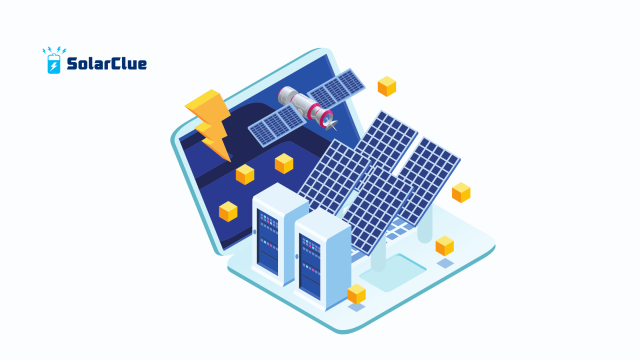
The latest advancements in solar panel efficiency are particularly notable for ultra-thin solar panels. Some research projects have already achieved efficiencies above 25%, a remarkable number considering their minimal thickness.
Their performance in cloudy or low-light environments also often surpasses that of standard rigid panels, making them ideal for locations with variable weather patterns.
Challenges Facing Ultra-Thin Solar Technology
Despite their promise, ultra-thin solar panels face certain challenges. Durability can be a concern, especially in harsh environmental conditions.
Manufacturing processes for these panels are also still being optimized, leading to higher initial costs compared to mass-produced traditional solar panels.
However, with continuous innovation and investment, these challenges are expected to diminish in the near future.
Recent Innovations and Future Outlook
Universities and research labs globally are pushing the boundaries of solar energy through ultrathin panels.
Recent breakthroughs in material science suggest that future ultra-thin solar panels could be even more efficient, durable, and cheaper to produce.
Mass production of roll-to-roll printed panels is also on the horizon, which could soon flood the market with affordable and efficient solutions for every sector.
Choosing the Best Solar Panel for Your Needs
Choosing the best solar panel depends heavily on individual requirements.
If flexibility, portability, and aesthetics are high priorities, then flexible solar panels are an excellent choice.
Key factors to consider include efficiency ratings, durability, warranty periods, and compatibility with your existing solar power system.
For more tips and guidance, check out blog.solarclue.com, where you’ll find in-depth resources tailored to your solar journey.
Why Ultra-Thin Solar Panels Could Dominate the Market
Consumer demand for sustainable, lightweight, and adaptable technologies is increasing exponentially.
Ultra-thin solar panels fit perfectly into this evolving market need, offering superior flexibility without sacrificing performance.
As innovation drives costs down and efficiency up, these panels are poised to become the preferred choice for modern consumers, businesses, and governments alike.
Government and Corporate Investments
Recognizing the potential, governments are investing heavily in renewable energy initiatives that include funding for ultra-thin solar panels development.
Major corporations are also integrating these panels into their sustainability strategies, not only to meet green energy targets but also to showcase leadership in innovation and corporate responsibility.
How to Incorporate Ultra-Thin Solar Panels at Home
Incorporating ultra-thin solar panels into your home can be simpler than you think.
While DIY kits are available, for optimal setup and maximum solar panel efficiency, it is advisable to hire professional installers.
Maintenance is relatively easy, primarily involving regular cleaning and occasional inspections to ensure peak performance.
Final Thoughts: The Bright Future of Solar Power Systems
The potential of ultra-thin panels is staggering. From urban skyscrapers wrapped in solar films to everyday gadgets powered by the sun, the possibilities are limitless.
By embracing solar energy technologies like these, we move closer to a future where sustainable living is accessible, affordable, and practical for everyone.
Choosing the right solar power system now means being part of a revolutionary shift that benefits both people and the planet.
FAQs About Ultra-Thin Solar Panels
Q1. Are ultra-thin solar panels durable?
Yes, modern manufacturing techniques have significantly improved the durability of ultra-thin solar panels, making them suitable for a range of environments.
Q2. How efficient are flexible solar panels compared to traditional ones?
While early models lagged behind, today’s flexible solar panels boast competitive solar panel efficiency, rivaling that of many traditional solar panels.
Q3. Can I install ultra-thin panels myself?
DIY installation is possible for smaller setups, but professional installation is recommended to ensure optimal performance and longevity.
Q4. What are the costs associated with ultra-thin panels?
Currently, ultra-thin solar panels may carry a premium, but as technology advances and scales up, costs are expected to decrease significantly.
Q5. Where can I buy the best flexible solar panels?
You can explore a wide range of flexible and ultra-thin solar panels at trusted platforms like solarclue.com and stay updated through helpful insights at blog.solarclue.com.
If you’re excited about making a sustainable switch and discovering the future of solar energy, make sure you explore more amazing innovations and offers at solarclue.com! Your green energy journey starts today! 🌞

